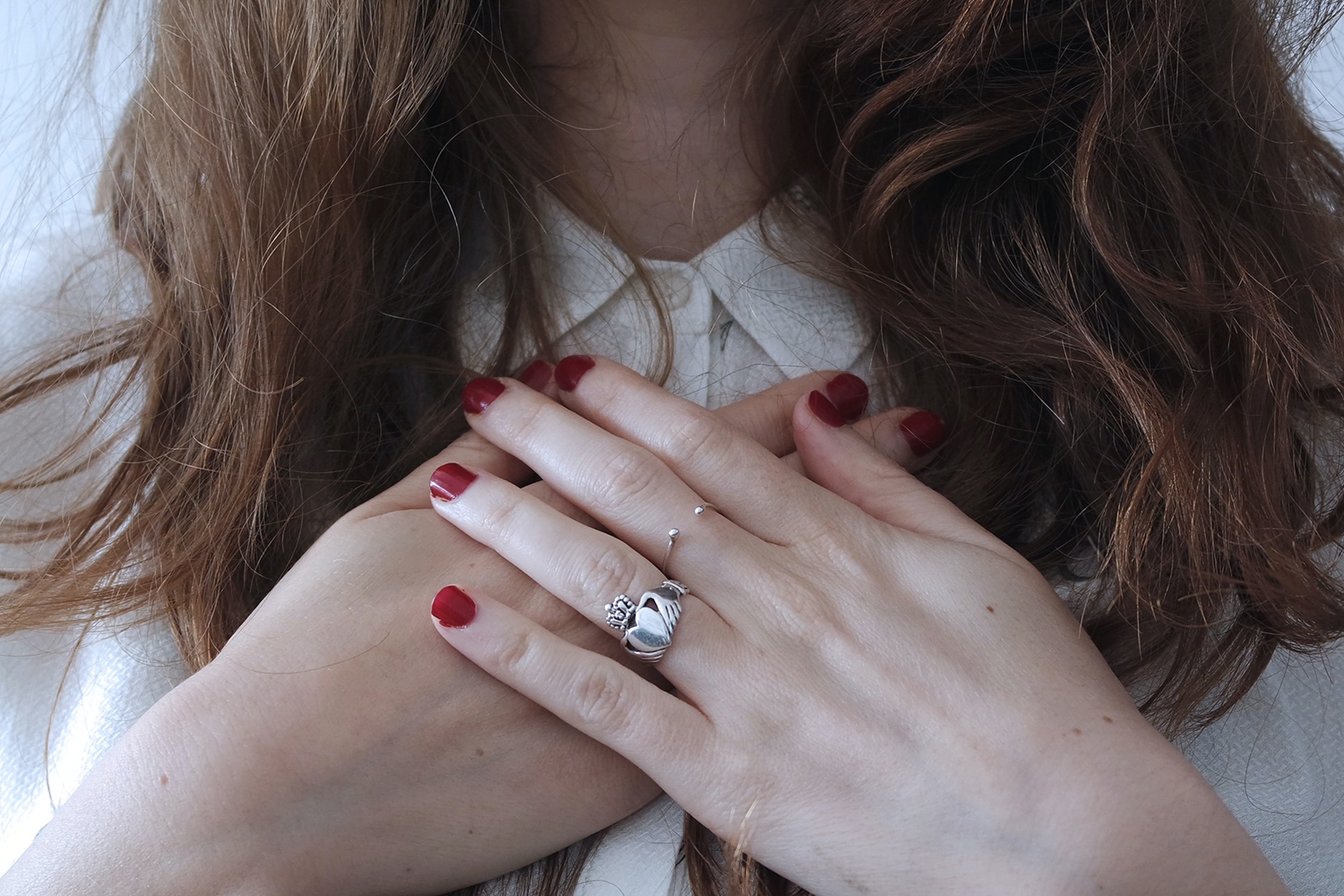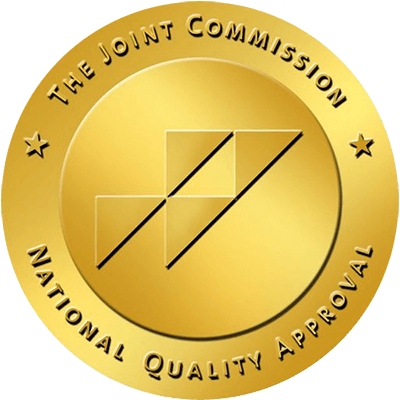Written by Shannon,
Brightside Health
15 Minute Read

Medically reviewed by:
Erin O'Callaghan, PHD
Director of Therapy
10 Minute Read

If you’re asking, “Can anxiety cause chest pain?” or “Can anxiety cause chest tightness?” the simple answer is yes. However, although chest pain from anxiety is common, distinguishing it from more serious conditions is crucial.
Experiencing chest pain can be alarming, especially when it strikes unexpectedly. It’s often attributed to anxiety or panic attacks and can mimic the symptoms of heart-related issues, causing confusion and concern.
In this article, we explore the connection between anxiety and chest pain, with insights into identifying symptoms and potential solutions.
What Is Anxiety Chest Pain?
Anxiety chest pain refers to the discomfort or pain in the chest that occurs when a person experiences anxiety or a panic attack. The sensation of anxiety in the chest can be sharp, stabbing, or a feeling of tightness. It’s important to recognize this as distinct from cardiac-related pain.
Anxiety chest pain can mimic the symptoms of heart issues, which can be alarming. It usually occurs due to physiological changes such as a rapid heart rate or altered breathing patterns during anxiety episodes.
Experiencing anxiety and chest pain together doesn’t automatically indicate a heart problem, but medical evaluation is advised to rule out cardiac causes. People often find this overlap creates additional stress, exacerbating anxiety symptoms.
Recognizing the link between anxiety and chest pain is essential for effective management and reassurance, preventing unnecessary worry about heart health.
What Does Chest Pain From Anxiety Feel Like?
Anxiety chest pain can vary in sensation and intensity. It’s often described as a sharp, stabbing pain that arises suddenly. The anxiety chest pain location often feels like it’s coming from the center or left side of the chest.
Some people experience tightness or pressure in the chest, which is described as heavy and can create a feeling of suffocation. This sensation is accompanied by a sense of anxiousness or worry about personal health.
The location of the pain isn’t always consistent, and it can move around the chest area. The pain can also manifest as a dull ache or a burning sensation.
In some cases, an unusual muscle twitch or spasm can occur in the chest, adding to the discomfort. The experience may be different for everyone, affecting each individual uniquely.
Tightness in the chest caused by anxiety can be frightening, as these sensations can mimic more serious conditions and can cause people to seek immediate medical attention, even if the pain isn’t linked to a physical heart condition. Monitoring symptoms and seeking professional advice is essential to differentiate between anxiety-related pain and other causes.
Understanding these sensations as a part of an anxiety or panic attack can help in managing the symptoms and reducing fear.
Want to speak 1:1 with an expert about your anxiety & depression?
Why Does Anxiety Cause Chest Pain?
It’s not uncommon for people suffering from anxiety or an anxiety attack to experience chest pain. Here are some of the reasons why anxiety can cause chest pain.
1. Elevated Stress Levels
Stress can lead to physical reactions in the body, including chest pain. Elevated stress levels trigger the release of stress hormones like adrenaline. These hormones increase heart rate and blood pressure, which may lead to sensations of tightness or discomfort in the chest area.
2. Muscle Tension
Individuals experiencing anxiety often exhibit increased muscle tension. The muscles around the chest can become strained and tense, leading to pain or discomfort. This tension may be constant, making it challenging to relieve the sensation of chest tightness.
3. Hyperventilation
During an anxiety episode, breathing patterns may change, resulting in hyperventilation. This rapid breathing can lower carbon dioxide levels in the blood, causing symptoms such as dizziness and heart palpitations. The disruption in normal breathing patterns can cause or amplify chest pain.
4. Cardiovascular Response
Anxiety can simulate a “fight or flight” response, affecting cardiovascular function. Heart rate and blood pressure can spike, which puts extra pressure on the heart, leading to chest discomfort. While this is often harmless, it can be distressing, especially if there’s a sustained feeling of tightness or pain.
5. Perception and Sensitivity
People with anxiety might become more sensitive to bodily sensations, perceiving normal physical functions as threatening. This heightened awareness can intensify feelings of chest pain or discomfort, as they may misinterpret these signals as more severe than they are.
By first recognising why your anxiety is causing chest pain and how, you can then learn how to relieve chest pain from stress.
How to Relieve Chest Tightness From Anxiety? 7 Ways to Ease Anxiety Chest Pains
If you or someone you know is suffering from chest tightness due to anxiety, there are a few techniques that can be used to ease the pain. Some ways to fight chest pain with anxiety include the following:
1. Deep Breathing Exercises
Deep breathing exercises are a cornerstone of anxiety management as they directly influence the autonomic nervous system, helping to counteract the body’s stress response.
When a person feels anxious, their breathing often becomes shallow and rapid, which can contribute to chest tightness and a sense of breathlessness. Deliberately slowing the breath activates the parasympathetic nervous system, promoting relaxation and lowering heart rate.
A simple yet effective technique is diaphragmatic breathing:
- Inhale deeply through the nose for about four to six seconds, allowing the belly to expand rather than just the chest.
- Hold the breath for a moment, ensuring that oxygen fully circulates through the body.
- Exhale slowly and fully through the mouth for six to eight seconds, as if gently blowing out a candle.
Repeating this process for a few minutes can significantly reduce anxiety-related chest tightness and promote a sense of calm.
2. Mindfulness and Meditation
Mindfulness and meditation techniques are powerful tools for managing anxiety as they encourage individuals to remain present rather than getting caught up in anxious thoughts about the past or future.
Mindfulness involves paying close attention to physical sensations, emotions, and thoughts without reacting to them or judging them as good or bad. For anxiety-induced chest pain, mindfulness can be particularly helpful as it reduces the tendency to catastrophize physical symptoms.
Guided meditation or body scan techniques can also be effective, where individuals systematically focus on different parts of the body, acknowledging any tension or discomfort without resistance.
Regular mindfulness practice can rewire the brain to respond to stress more effectively, lowering cortisol levels and decreasing overall anxiety intensity. Over time, this can lead to a noticeable reduction in both the frequency and severity of anxiety-related chest discomfort.
3. Regular Physical Activity
Physical activity is one of the most effective ways to regulate anxiety and its associated physical symptoms. When a person engages in movement, the body releases endorphins—natural chemicals that act as painkillers and mood elevators. Exercise also helps metabolize excess adrenaline, a stress hormone that can contribute to chest tightness and rapid heartbeat.
Activities such as walking, swimming, cycling, yoga, or strength training can be particularly beneficial. Yoga, in particular, combines movement with breath control and mindfulness, making it especially effective for managing anxiety-induced physical symptoms. Cardiovascular exercises like jogging or dancing can help burn off nervous energy, while resistance training helps release built-up muscle tension.
Beyond immediate symptom relief, regular exercise strengthens the body’s resilience to stress over time, making it easier to cope with anxiety and reducing the likelihood of experiencing chest tightness due to stress.
4. Visualization Techniques
Visualization, also known as guided imagery, is a relaxation method that helps shift focus away from anxiety-related sensations, such as chest tightness, by engaging the mind in positive mental imagery. The brain responds to imagined experiences similarly to real ones, meaning that picturing a peaceful environment can evoke actual feelings of calmness.
To practice visualization:
- Close your eyes and imagine a serene setting, such as a quiet beach, a peaceful forest, or a warm, sunny meadow.
- Engage all senses in the imagery—hear the waves, feel the breeze, smell the flowers, and see the colors.
- Breathe deeply as you immerse yourself in the scene, allowing your body to relax naturally.
This technique is particularly helpful during acute moments of anxiety when physical symptoms like chest tightness feel overwhelming. By redirecting mental focus, the body can enter a state of relaxation more quickly and target stress and chest pain more effectively.
5. Support Networks
Anxiety can feel isolating, but having a strong support network can provide reassurance and help reduce the burden of stress. Speaking with trusted friends, family members, or support groups allows individuals to verbalize their fears and concerns, which can be incredibly therapeutic.
When anxiety manifests physically, such as in chest tightness or discomfort, talking to someone who understands can help normalize the experience and reduce the fear surrounding it. Support networks can also provide practical advice, encouragement, and reminders that anxiety-related symptoms are temporary and manageable.
In addition to personal relationships, joining an anxiety support group—either in person or online—can help individuals feel less alone and learn coping strategies from others who have had similar experiences.
6. Progressive Muscle Relaxation
Progressive muscle relaxation (PMR) is a structured technique that helps release physical tension associated with anxiety. Anxiety often causes muscles to remain in a state of tension, particularly in the chest, shoulders, and neck. PMR works by systematically tensing and then relaxing different muscle groups, signaling to the body that it is safe to let go of stress.
A typical PMR session follows these steps:
- Start with the feet—tense the muscles by curling the toes tightly for about 5 seconds, then release.
- Move up to the calves, tightening for 5 seconds before releasing.
- Progress to the thighs, abdomen, chest, shoulders, arms, and finally the face.
- With each release, exhale deeply and focus on the sensation of relaxation.
This method not only reduces muscle tension but also shifts attention away from anxious thoughts, creating a sense of physical and mental relief.
7. Professional Counseling or Therapy
For individuals experiencing persistent anxiety and physical symptoms such as chest tightness, professional counseling or therapy can be an invaluable resource. Therapists provide evidence-based strategies to address the root causes of anxiety rather than just managing symptoms.
One of the most effective approaches for anxiety-related chest pain is cognitive behavioral therapy (CBT), which focuses on identifying and restructuring negative thought patterns that contribute to physical symptoms. For example, someone experiencing chest tightness may fear they’re having a heart attack, leading to further panic. CBT helps individuals recognize these cognitive distortions and replace them with more balanced, realistic thoughts.
Other therapeutic approaches, such as acceptance and commitment therapy (ACT), somatic therapy, or biofeedback, can also be beneficial, depending on an individual’s specific needs. In some cases, medication prescribed by a healthcare professional may be an additional option for managing severe anxiety symptoms.
Seeking professional help can provide long-term strategies for managing anxiety and preventing recurring physical symptoms, offering individuals greater confidence in handling their stress and emotions.
Want to speak 1:1 with an expert about your anxiety & depression?
How Long Does Anxiety Chest Pain Last?
Anxiety can manifest as various physical symptoms, with chest pain being a common one. The duration of this pain can vary significantly from person to person.
Typically, anxiety-related chest pain lasts around 10 minutes. For many individuals, it’s a part of a panic attack, which generally has a relatively short duration.
In some cases, the pain might persist longer, lasting several hours. This happens especially if it’s caused by muscle tension in the chest wall. On rare occasions, this pain can continue for days.
During anxiety attacks, chest pain might also accompany other symptoms. While the pain itself is usually short-lived, lingering sensations of anxiety can last for an hour or longer.
Despite feeling severe, anxiety-induced chest pain is temporary and non-life-threatening. It’s crucial for individuals to acknowledge this to manage their symptoms effectively.
Need Professional Anxiety Help?
Seeking professional help for anxiety can be crucial for many people. Anxiety can manifest in various physical symptoms, including chest pain. Although common, these symptoms can be distressing and may interfere with daily life.
For those exploring options for managing anxiety, Brightside Health offers innovative online therapy services. Brightside Health provides tailored treatment plans to address individual needs efficiently.
Get started by taking the anxiety test. It serves as a useful first step in identifying symptoms and seeking relief from anxiety-related chest pain.
Want to speak 1:1 with an expert about your anxiety & depression?
Final Thoughts
Anxiety can cause chest pain, which may mimic more serious conditions like heart attacks. This type of pain is a common symptom during anxiety and panic attacks, often resulting from the release of stress hormones such as cortisol and adrenaline.
It’s essential to differentiate between anxiety-induced chest pain and other potential causes to ensure appropriate treatment.
Individuals experiencing this symptom should monitor its frequency and intensity and consult with healthcare professionals to rule out any underlying health issues.
Managing anxiety through various techniques, including therapy and medication, can significantly reduce chest pain and improve one’s overall well-being.
FAQs
Can anxiety cause chest pain every day?
Yes, anxiety can cause chest pain on a daily basis for some individuals. Persistent anxiety may lead to recurring chest discomfort, often due to the body’s heightened stress response. This may result in muscle tension and increased heart rate, contributing to regular chest pain.
While this pain is usually non-cardiac, chronic anxiety should be addressed with appropriate strategies such as therapy or stress management techniques to alleviate symptoms.
Consulting with a healthcare provider can help determine the best approach for managing daily chest pain caused by anxiety.
What is the best treatment for chest pain from anxiety?
Knowing how to deal with anxiety will help you find the best treatment for anxiety-related chest pain. This often involves a combination of therapies. Techniques such as cognitive behavioral therapy (CBT) can significantly reduce anxiety by altering negative thought patterns.
Relaxation techniques, including deep breathing, meditation, and progressive muscle relaxation, can offer immediate relief during episodes of chest pain. Regular physical exercise and a balanced diet support overall mental well-being, potentially reducing symptoms.
Medication, such as anti-anxiety medications or selective serotonin reuptake inhibitors (SSRIs), may also be prescribed, especially for more severe cases. For example, taking lexapro for anxiety has proven to be beneficial for many of its users. A healthcare professional will tailor treatment plans specific to individual needs.
Can anxiety cause chest pain on the left side?
Anxiety-related chest pain can manifest on the left side, mimicking the symptoms of a heart attack. This can be particularly distressing as it intensifies anxiety, leading to a cycle of persistent beliefs in severe health issues. The left-sided pain is generally muscular in origin rather than cardiac. Stress and tension impact muscles, including those in the chest, leading to localized pain.
While anxiety-induced pain on the left side usually isn’t serious from a cardiac perspective, any persistent pain should be assessed by a medical professional to rule out other causes, easing the individual’s concerns about their health.
How to distinguish between tightness in the chest due to anxiety and cardiac chest pain?
Differentiating between anxiety-induced chest tightness and cardiac pain can be challenging. Anxiety chest pain often accompanies symptoms like increased heart rate, sweating, and dizziness. It’s typically sharp or stabbing and occurs during or after anxiety spikes.
Cardiac chest pain generally feels like pressure or squeezing and may spread to other areas like the arms or jaw. It often intensifies with physical activity. An electrocardiogram (ECG) and other tests can rule out heart issues. Seeking medical advice is vital if there is any uncertainty, as timely intervention for cardiac events is critical.
What to do if anxiety chest pain is not going away?
If anxiety chest pain persists, first attempts at reducing stress should include implementing relaxation techniques and ensuring adequate rest. Scheduled practice of stress-relief exercises can be beneficial.
Seeking professional help, such as therapy, can guide individuals in coping with anxiety symptoms more effectively. Persistent pain that does not respond to stress management may require medication.
Consulting a healthcare provider is essential to develop a targeted treatment strategy and to rule out any underlying health issues.
Can anxiety cause shortness of breath?
Yes, anxiety can cause shortness of breath. During anxiety or panic attacks, the body’s fight-or-flight response is activated, releasing stress hormones. This can lead to rapid, shallow breathing known as hyperventilation.
Hyperventilation reduces carbon dioxide levels in the blood, causing shortness of breath and sometimes dizziness or tingling sensations. Employing controlled breathing techniques, such as inhaling deeply through the nose and exhaling slowly through the mouth, can help reduce these symptoms.
This reaction is typically not harmful but reinforces the need to manage anxiety triggers effectively.
How to tell chest pain from anxiety?
Determining if chest pain stems from anxiety involves awareness of associated symptoms. Anxiety chest pain typically occurs with feelings of panic, fear, or stress and presents as sharp pains or a fluttering sensation.
Unlike cardiac pain, which can persist and worsen with physical activity, anxiety pain often fluctuates with stress levels. Keeping a record of pain occurrences and triggers can help identify patterns. Consulting with a healthcare provider for appropriate tests ensures accurate diagnosis, peace of mind, and proper care.




















